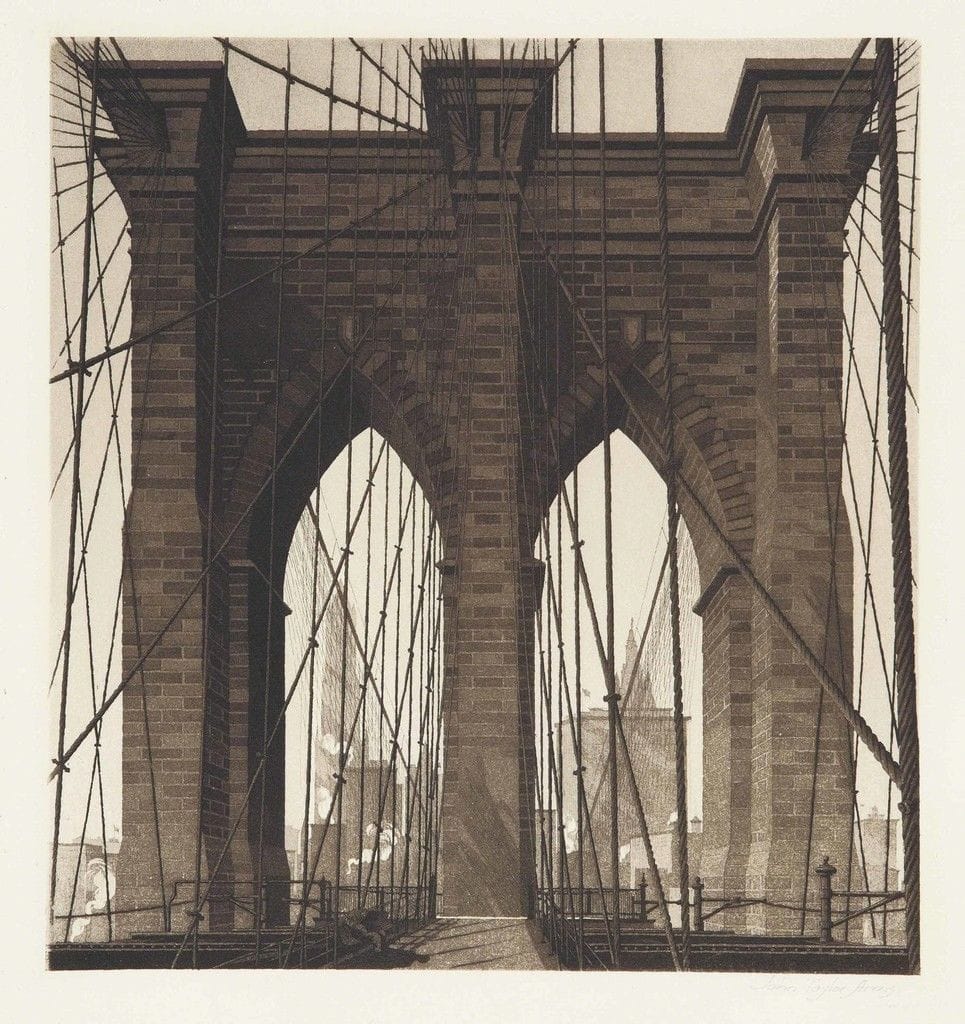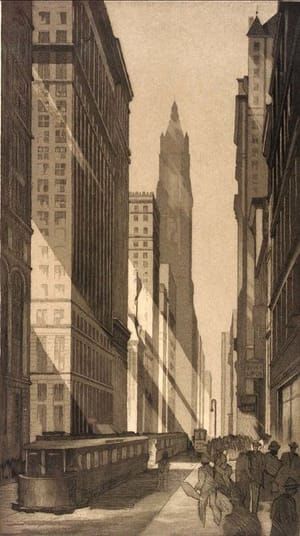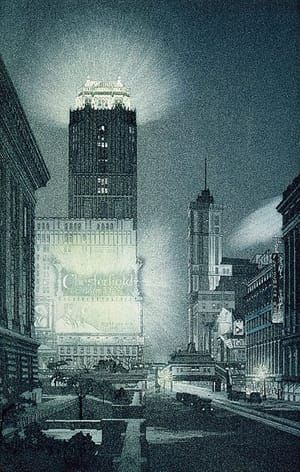

The Gates of the City, 1922
John Taylor Arms
In George Hall's "Bridge Promenade" (1892), for example, the bridge's New York tower fills the entire frame....
Hall's thematic composition was adapted in numerous photographs, paintings, and etchings. For example, John Taylor Arms's etching The Gates of the City is identical to Mall's photograph, except for two changes. First, where Hall captured a few people dwarfed by the bridge, Arms shows the bridge alone, almost entirely uninhabited. Second, the etching's title encourages the viewer to look beyond the promenade and toward the city behind the bridge. Here the reverential gaze is directed toward the two subjects: the heights of the bridge tower, then further, the skyline visible through the Gothic arches. This coupling relates the bridge to the skyline not to its patrons. It presents a quintessential image of the city: monumental, aesthetic, and reverential, yet also desocialized and depopulated.
[From The Brooklyn Bridge: A Cultural History by Richard Haw, found at Google Books]
9 x 8 in
Uploaded on Feb 24, 2018 by Suzan Hamer
John Taylor Arms
artistArthur
Wait what?


